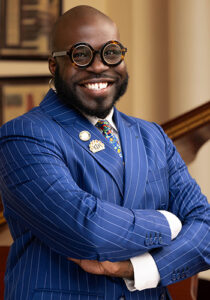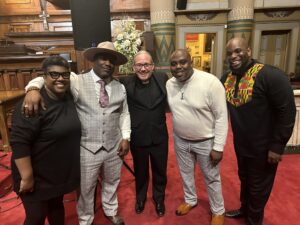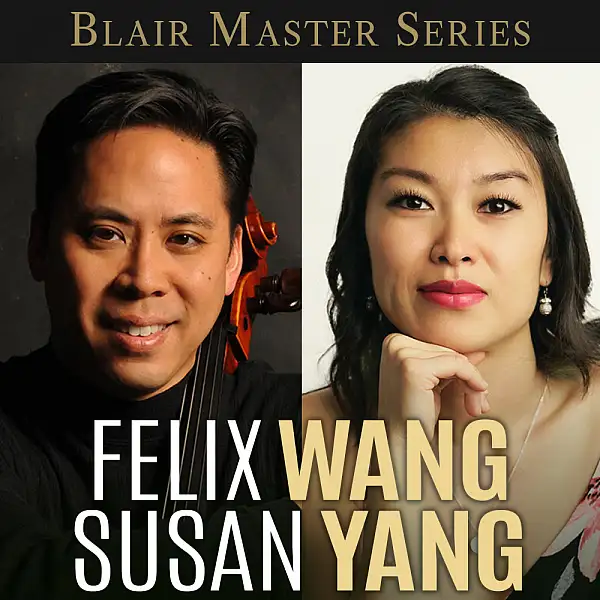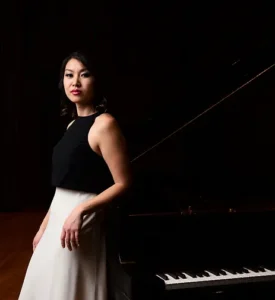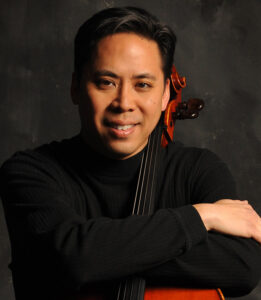Coming in October!
The Jazz Beat (October 16-31)
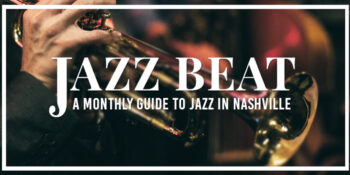
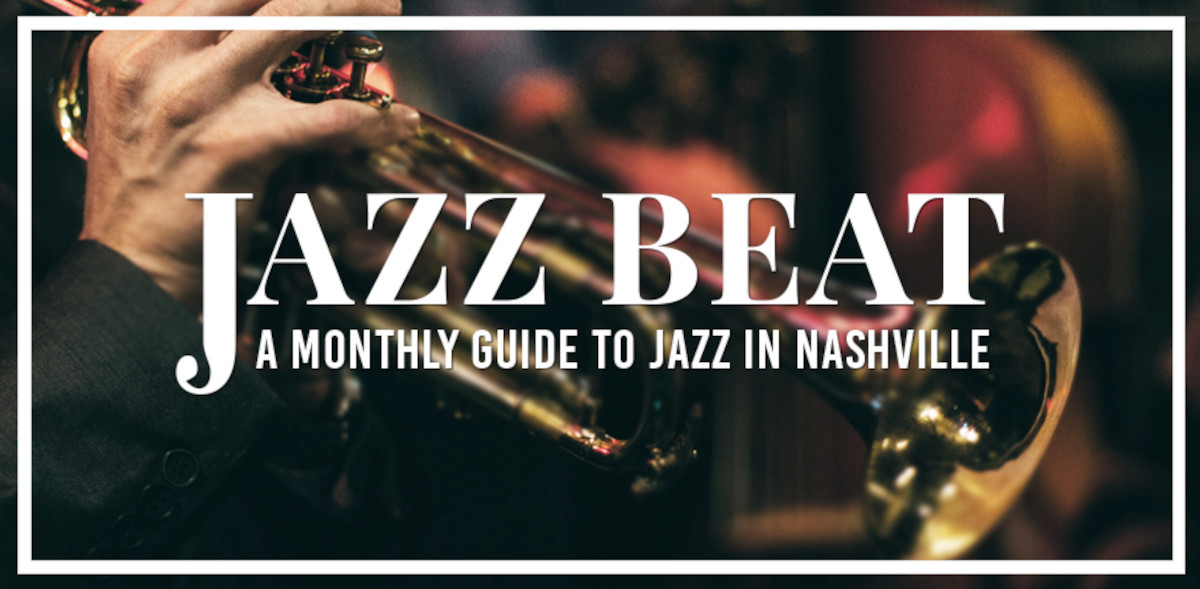
Hello, all, and welcome back to this regular column here at Music City Review. Here, we will update you with the most can’t-miss jazz events happening in Music City, so you can be sure to catch all your favorites, as well as discover new ones along the way. Get out there and support your local musicians and keep Music City thriving! We are always looking to promote great music that may not get the attention it deserves. Have an event you think should be included in the next issue? Email me at: JazzBeat@musiccityreview.com
If you wish to subscribe to this guide, click here!
Amanda Raye
October 17, 2024 @ 6:00 pm to 10:00 pm at Sambuca
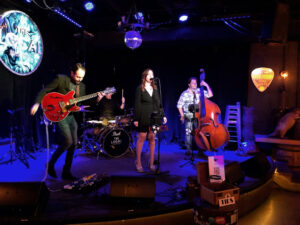 Though her music stands out as a blend of soul and country, singer Amanda Raye has been noted for her jazz influences.
Though her music stands out as a blend of soul and country, singer Amanda Raye has been noted for her jazz influences.
Hot Club Gypsy Jazz
October 17, 2024 @ 6:00 pm to 8:00 pm at Rudy’s Jazz Room
 Every Thursday night, Rudy’s honors its New Orleans and French roots by celebrating the vibrant music of Gypsy Jazz. These nights feature a variety of small groups either led or curated by New Orleans native Brook Sutton, all performing music in the style of the great Django Reinhardt and Stephane Grapelli. The bar will feature French Quarter-inspired cocktails as well as gumbo and beignets. Come out for as authentic a night as you can get without a trip to the French Quarter.
Every Thursday night, Rudy’s honors its New Orleans and French roots by celebrating the vibrant music of Gypsy Jazz. These nights feature a variety of small groups either led or curated by New Orleans native Brook Sutton, all performing music in the style of the great Django Reinhardt and Stephane Grapelli. The bar will feature French Quarter-inspired cocktails as well as gumbo and beignets. Come out for as authentic a night as you can get without a trip to the French Quarter.
Jack Ruch Organ Trio
October 17, 2024 @ 7:00 pm to 9:00 pm at The Underdog
 Guitarist Jack Ruch, organist Adam Wakefield, and drummer Nioshi Jackson make up this soul and blues trio. The music you’ll hear here makes up the core of jazz’s roots, so any jazz fan should feel right at home listening to this trio.
Guitarist Jack Ruch, organist Adam Wakefield, and drummer Nioshi Jackson make up this soul and blues trio. The music you’ll hear here makes up the core of jazz’s roots, so any jazz fan should feel right at home listening to this trio.
Jake Shimabukuro w/ JD Simo & Luther Dickinson
October 17, 2024 @ 7:30 pm to 10:00 pm at The Main Stage at City Winery
 October Highlight! File this under Things You Won’t Hear Every Day – a ukulele ripping out jazz, blues, and funk music. Known as a ukulele virtuoso, Hawaii native Jake Shimabukuro does just that. His newest album, set to release October 18th, is a collaboration with drummer Mick Fleetwood, founding member of Fleetwood Mac, and offers a fresh new take on the blues. This performance features guitarists JD Simo and Luther Dickinson.
October Highlight! File this under Things You Won’t Hear Every Day – a ukulele ripping out jazz, blues, and funk music. Known as a ukulele virtuoso, Hawaii native Jake Shimabukuro does just that. His newest album, set to release October 18th, is a collaboration with drummer Mick Fleetwood, founding member of Fleetwood Mac, and offers a fresh new take on the blues. This performance features guitarists JD Simo and Luther Dickinson.
Rebecca Carlson
October 17, 2024 @ 9:00 pm to 11:00 pm at Rudy’s Jazz Room
 Jazz and blues vocalist Rebecca Carlson has made a name for herself across the country, taking stints based in New York City, Tucson, Los Angeles, and now Nashville. An extensive touring and recording career has made her quite an in-demand performer.
Jazz and blues vocalist Rebecca Carlson has made a name for herself across the country, taking stints based in New York City, Tucson, Los Angeles, and now Nashville. An extensive touring and recording career has made her quite an in-demand performer.
Ladies of Jazz
October 18, 2024 @ 5:30 pm to 7:30 pm at Rudy’s Jazz Room
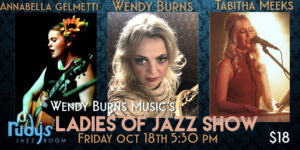 Another Ladies of Jazz show at Rudy’s, featuring an excellent lineup of Nashville women, including Wendy Burns, jazz flutist and vocalist, Tabitha Meeks, pianist and singer/songwriter, and Annabella Gelmetti, guitarist, singer/songwriter, and producer.
Another Ladies of Jazz show at Rudy’s, featuring an excellent lineup of Nashville women, including Wendy Burns, jazz flutist and vocalist, Tabitha Meeks, pianist and singer/songwriter, and Annabella Gelmetti, guitarist, singer/songwriter, and producer.
Stephanie Adlington
October 18, 2024 @ 8:00 pm to 10:00 pm at Rudy’s Jazz Room
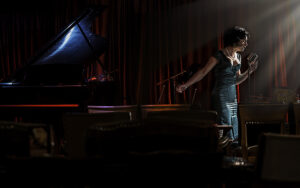 Another frequent visitor to the Rudy’s stage, award-winning vocalist, songwriter and vocal coach Stephanie Adlington is known as the “Siren of the South,” with an “unrivaled” take on the Great American Songbook.
Another frequent visitor to the Rudy’s stage, award-winning vocalist, songwriter and vocal coach Stephanie Adlington is known as the “Siren of the South,” with an “unrivaled” take on the Great American Songbook.
Zach Douglas Plays 2000’s Pop-Punk
October 18, 2024 @ 11:00 pm to 11:30 pm at Rudy’s Jazz Room
 On the more unique side of Rudy’s performances, trumpeter Zach Douglas will present a set of horn-driven arrangements of 2000’s pop-punk music. He will be joined by a stellar lineup of other Nashville musicians who owe at least part of their musical identity to this music, including David Williford and Jordan Morack on saxophone, flute, clarinet, and bass clarinet, Madison George on drums, Leland Nelson on bass, and Sam Farkas on guitar.
On the more unique side of Rudy’s performances, trumpeter Zach Douglas will present a set of horn-driven arrangements of 2000’s pop-punk music. He will be joined by a stellar lineup of other Nashville musicians who owe at least part of their musical identity to this music, including David Williford and Jordan Morack on saxophone, flute, clarinet, and bass clarinet, Madison George on drums, Leland Nelson on bass, and Sam Farkas on guitar.
Music in the Vines
October 19, 2024 @ 3:00 pm to 7:00 pm at Arrington Vineyards
Arrington Vineyards features concerts of Jazz and Bluegrass every Saturday and Sunday. This performance features The Lilliston Effect.
Pat Coil Trio
October 19, 2024 @ 5:30 pm to 7:30 pm at Rudy’s Jazz Room
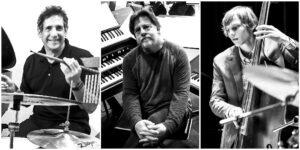 Renowned Nashville pianist Pat Coil will perform this month with his trio, featuring Jacob Jezioro on bass and Danny Gottlieb on drums.
Renowned Nashville pianist Pat Coil will perform this month with his trio, featuring Jacob Jezioro on bass and Danny Gottlieb on drums.
Jazzmania 2024
October 19, 2024 @ 6:00 pm to 10:00 pm at Liberty Hall
The Workshop’s annual fundraiser returns with Jazzmania 2024. The theme for this year is Ritmos de la Noche – A Latin Jazz Celebration, featuring music by the 10-piece Nashville Latin Fusion as well as a group of young musicians from the Nashville Youth Jazz Ensemble. The event will also feature both live and silent auctions, with the opportunity to bid on everything from unique experiences, special dinners, vacation getaways, and paintings by noted artists.
Jody Nardone Trio
October 19, 2024 @ 8:00 pm to 10:00 pm at Rudy’s Jazz Room
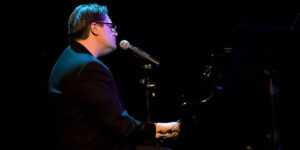 Prominent Nashville pianist Jody Nardone brings his trio to Rudy’s for a classic jazz set. With a growing national reputation, Nardone seamlessly shifts from the “whispered beauty of Bill Evans to the percussive flights of McCoy Tyner.” (Michael McCall, Nashville Scene)
Prominent Nashville pianist Jody Nardone brings his trio to Rudy’s for a classic jazz set. With a growing national reputation, Nardone seamlessly shifts from the “whispered beauty of Bill Evans to the percussive flights of McCoy Tyner.” (Michael McCall, Nashville Scene)
Don Aliquo Trio
October 19, 2024 @ 11:00 pm to 11:30 pm at Rudy’s Jazz Room
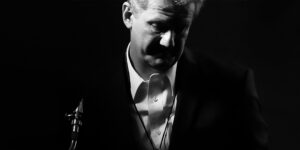 One of Nashville’s most active and accomplished saxophonists, Don Aliquo performs with his trio.
One of Nashville’s most active and accomplished saxophonists, Don Aliquo performs with his trio.
Music in the Vines
October 20, 2024 @ 1:00 pm to 5:00 pm at Arrington Vineyards
Arrington Vineyards features concerts of Jazz and Bluegrass every Saturday and Sunday. This performance features The Miles Damaso Group.
Jazz on the Cumberland w/ Kharee Norcross Quartet
October 20, 2024 @ 3:30 pm to 6:00 pm at Cumberland Park
October Highlight! For the last regular Jazz on the Cumberland performance for the year, the Kharee Norcross Quartet takes the stage.
Analog Soul – Breast Cancer Tribute Pink Party
October 20, 2024 @ 6:00 pm to 8:00 pm at Analog at Hutton Hotel
The Analog continues its Analog Soul series, featuring some of the city’s most promising emerging talent who are redefining soul music. This is the second annual Breast Cancer Tribute performance with Analog Soul. General admission is free, while you can reserve seating for $20.
Analog Soul
October 20, 2024 @ 6:00 pm to 8:00 pm at Analog at Hutton Hotel
The Analog continues its Analog Soul series, featuring some of the city’s most promising emerging talent who are redefining soul music. Artists for this performance are still TBA. General Admission is free, while you can reserve seating for $20.
Sarah J
October 20, 2024 @ 6:00 pm to 10:00 pm at Sambuca
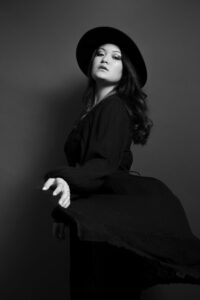 Known for an energetic personality and audience interactions, Sarah J’s music combines R&B, pop, and contemporary jazz.
Known for an energetic personality and audience interactions, Sarah J’s music combines R&B, pop, and contemporary jazz.
Bruce Dudley Trio
October 20, 2024 @ 6:00 pm to 8:00 pm at Rudy’s Jazz Room
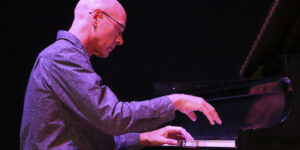 Bruce Dudley is a Steinway Concert Artist who has over 40 years of experience performing jazz all throughout North and South America. He has recorded a number of albums as bandleader, as well as performed with big industry names like Aretha Franklin, Herb Ellis, and Crystal Gale. Both performances this month will be in trio format, the first featuring Roger Spencer on bass and Chris Brown on drums, and the second featuring Jim Ferguson on bass and Josh Hunt on drums.
Bruce Dudley is a Steinway Concert Artist who has over 40 years of experience performing jazz all throughout North and South America. He has recorded a number of albums as bandleader, as well as performed with big industry names like Aretha Franklin, Herb Ellis, and Crystal Gale. Both performances this month will be in trio format, the first featuring Roger Spencer on bass and Chris Brown on drums, and the second featuring Jim Ferguson on bass and Josh Hunt on drums.
Blair Jazz Combos
October 20, 2024 @ 8:00 pm to 10:00 pm at Turner Recital Hall, Vanderbilt University
The jazz small groups at Vanderbilt’s Blair Music School perform, with a program featuring everything from classic jazz standards to contemporary works to original compositions by Blair students and faculty. Tickets are pay as you wish ($0-30)
Rudy’s Jazz Jam
October 20, 2024 @ 9:00 pm to 11:00 pm at Rudy’s Jazz Room
 I couldn’t make a list of Rudy’s events without including a shout-out for the regular weekly Jazz Jam the club hosts every Sunday night. Whether you are a jazz musician and you want to jam with your fellow artists, or you just want to come and enjoy what the local talent has to offer, the Jazz Jam is a great way to end your weekend.
I couldn’t make a list of Rudy’s events without including a shout-out for the regular weekly Jazz Jam the club hosts every Sunday night. Whether you are a jazz musician and you want to jam with your fellow artists, or you just want to come and enjoy what the local talent has to offer, the Jazz Jam is a great way to end your weekend.
Erik Blue
October 21, 2024 @ 6:00 pm to 10:00 pm at Sambuca
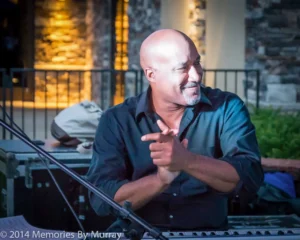 This band has been described as “the best live band in Nashville,” creating an upbeat atmosphere that keeps audiences on their feet.
This band has been described as “the best live band in Nashville,” creating an upbeat atmosphere that keeps audiences on their feet.
Re-Evolution
October 21, 2024 @ 6:00 pm to 8:00 pm at Rudy’s Jazz Room
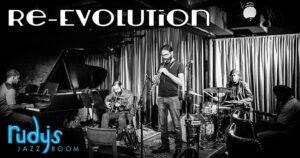 This five-piece band is heavily influenced by classic jazz cutting-edge artists like Thelonius Monk, Wes Montgomery, John Coltrane, Bill Evans, and more. The band consists of Brian Cornish on saxophone, Regi Wooten on bass, Daryl Johnson on drums, Adam Charney on guitar and Alex Murphy on piano.
This five-piece band is heavily influenced by classic jazz cutting-edge artists like Thelonius Monk, Wes Montgomery, John Coltrane, Bill Evans, and more. The band consists of Brian Cornish on saxophone, Regi Wooten on bass, Daryl Johnson on drums, Adam Charney on guitar and Alex Murphy on piano.
Cam Gallagher & the Tasty Soul
October 21, 2024 @ 7:30 pm to 10:00 pm at The Cobra
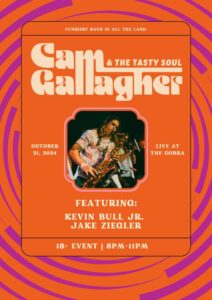 October Highlight! Though a local band, I wanted to shout out this group because they are one of my personal favorite emerging acts in town. Consisting of top-of-the-line musicians, this group offers a level of live performance that stands out, even here in Music City.
October Highlight! Though a local band, I wanted to shout out this group because they are one of my personal favorite emerging acts in town. Consisting of top-of-the-line musicians, this group offers a level of live performance that stands out, even here in Music City.
The Guthrie Trapp Trio
October 21, 2024 @ 8:00 pm to 10:00 pm at The Underdog
 One of Nashville’s preeminent guitar talents will perform several times at the Underdog. More blues and country than jazz, Trapp’s intricate and highly technical guitar playing will surely interest those who love the technicality of jazz music. His trio features Jordan Perlson on drums and Tim Marks on bass.
One of Nashville’s preeminent guitar talents will perform several times at the Underdog. More blues and country than jazz, Trapp’s intricate and highly technical guitar playing will surely interest those who love the technicality of jazz music. His trio features Jordan Perlson on drums and Tim Marks on bass.
Giovanni Rodriguez & 12 Manos
October 21, 2024 @ 9:00 pm to 11:00 pm at Rudy’s Jazz Room
 A favorite on the Nashville Latin and jazz scene, multi-instrumentalist Giovanni Rodriguez presents an electric night of salsa, along with his band consisting of Rodriguez (bass/vocals), Melvin Macias (piano/vocals), Jesus Agreda (Timbales), Lorenzo Molina Ruiz (Trumpet), and Manuel ‘Manotas’ Ramierez (multi-Percussion).
A favorite on the Nashville Latin and jazz scene, multi-instrumentalist Giovanni Rodriguez presents an electric night of salsa, along with his band consisting of Rodriguez (bass/vocals), Melvin Macias (piano/vocals), Jesus Agreda (Timbales), Lorenzo Molina Ruiz (Trumpet), and Manuel ‘Manotas’ Ramierez (multi-Percussion).
Tower of Power w/ the Nashville Symphony
October 22, 2024 @ 7:30 pm to 10:00 pm at Schermerhorn Symphony Center
 October Highlight! Iconic funk and fusion band Tower of Power celebrates the 56th anniversary of the group with a special symphonic performance of some of their biggest hits, including “What Is Hip?,” “Clever Girl,” “This Time It’s Real,” and many more. Presented with the Nashville Symphony, conducted by Enrico Lopez-Yañez.
October Highlight! Iconic funk and fusion band Tower of Power celebrates the 56th anniversary of the group with a special symphonic performance of some of their biggest hits, including “What Is Hip?,” “Clever Girl,” “This Time It’s Real,” and many more. Presented with the Nashville Symphony, conducted by Enrico Lopez-Yañez.
Vanderbilt Blue Note & Verve Combos
October 23, 2024 @ 6:00 pm to 8:00 pm at Rudy’s Jazz Room
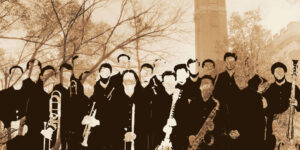 Featuring some of the premier improvising musicians in the award-winning Jazz Studies department at Vanderbilt University, the Blue Note and Verve Combos perform under the direction of jazz greats and Professors Ryan Middagh, Jeff Coffin, and Rob Linton.
Featuring some of the premier improvising musicians in the award-winning Jazz Studies department at Vanderbilt University, the Blue Note and Verve Combos perform under the direction of jazz greats and Professors Ryan Middagh, Jeff Coffin, and Rob Linton.
Mildlife
October 23, 2024 @ 8:00 pm to 11:00 pm at The Basement East
October Highlight! A psychedelic jazz fusion group from Melbourne, Australia stops by the intimate Basement East for what is sure to be a great performance.
Regi Wooten & Friends
October 23, 2024 @ 9:00 pm to 11:00 pm at Rudy’s Jazz Room
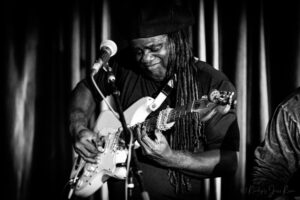 Coming from a distinctly talented musical family, Regi Wooten is one of the most innovative and dynamic musicians on the scene today, pushing the boundaries of the traditional genres. Equally at home playing Hendrix as Wes Montgomery, Wooten assembles a group of some of Nashville’s best musicians to offer a night steeped in funk, jazz, soul, blues and rock.
Coming from a distinctly talented musical family, Regi Wooten is one of the most innovative and dynamic musicians on the scene today, pushing the boundaries of the traditional genres. Equally at home playing Hendrix as Wes Montgomery, Wooten assembles a group of some of Nashville’s best musicians to offer a night steeped in funk, jazz, soul, blues and rock.
Thea Danos
October 24, 2024 @ 6:00 pm to 10:00 pm at Sambuca
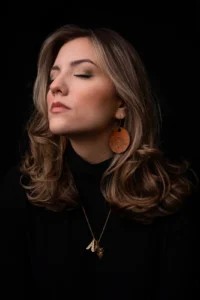 Nashville native Thea Danos specializes in jazz and Brazilian bossa nova, a style she is intimately familiar with as she has spent extensive time in Brazil performing and perfecting her Portuguese singing. Danos likely will be the closest one can get to authentic Brazilian bossa nova in Nashville.
Nashville native Thea Danos specializes in jazz and Brazilian bossa nova, a style she is intimately familiar with as she has spent extensive time in Brazil performing and perfecting her Portuguese singing. Danos likely will be the closest one can get to authentic Brazilian bossa nova in Nashville.
Goose
October 24, 2024 @ 7:00 pm to 10:00 pm at Ascend Amphitheater
 October Highlight! American jam band Goose comes to Ascend Amphitheater. Emerging in 2016 and steadily increasing their devoted following since, Goose is known for their musical exploration and phenomenal performances.
October Highlight! American jam band Goose comes to Ascend Amphitheater. Emerging in 2016 and steadily increasing their devoted following since, Goose is known for their musical exploration and phenomenal performances.
Big Bands (Belmont)
October 24, 2024 @ 7:30 pm to 9:30 pm at Massey Concert Hall, Belmont University
Belmont School of Music’s two student big bands perform, presenting music from classic big band swing to modern jazz fusion.
Andrew Carney Quartet
October 25, 2024 @ 5:30 pm to 7:30 pm at Rudy’s Jazz Room
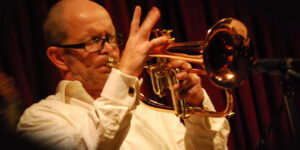 Nashville-based trumpeter flugelhornist Andrew Carney performs with his quartet. Carney has had a prolific recording and performing career, having performed with artists from Pink to Aretha Franklin to Ariana Grande, and recorded on commercials for Google, Nutra Systems, among others.
Nashville-based trumpeter flugelhornist Andrew Carney performs with his quartet. Carney has had a prolific recording and performing career, having performed with artists from Pink to Aretha Franklin to Ariana Grande, and recorded on commercials for Google, Nutra Systems, among others.
Jack Pearson
October 25, 2024 @ 8:00 pm to 10:00 pm at 3rd & Lindsley Bar & Grill
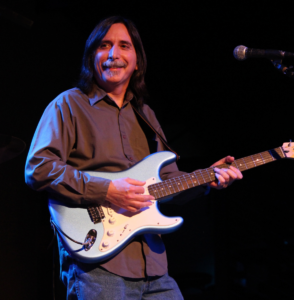 October Highlight! Nashville native and former Allman Brothers guitarist Jack Pearson comes to 3rd and Lindsley for an evening of phenomenal music that ranges from blues to rock to jazz.
October Highlight! Nashville native and former Allman Brothers guitarist Jack Pearson comes to 3rd and Lindsley for an evening of phenomenal music that ranges from blues to rock to jazz.
Naama Quartet – Wild Is Love!
October 25, 2024 @ 8:00 pm to 10:00 pm at Rudy’s Jazz Room
 NYC-based vocalist Naama returns to Music City for two weekend sets at Rudy’s, supporting the release of her fourth record over the summer. Naama’s voice has been described as evoking “a honeyed warmth” by DownBeat Magazine, and “consistently full of raw emotion” by NYC Jazz Record. Her quartet will feature Pat Coil on piano, Jacob Jezioro on bass, and Ryan Brasley on drums.
NYC-based vocalist Naama returns to Music City for two weekend sets at Rudy’s, supporting the release of her fourth record over the summer. Naama’s voice has been described as evoking “a honeyed warmth” by DownBeat Magazine, and “consistently full of raw emotion” by NYC Jazz Record. Her quartet will feature Pat Coil on piano, Jacob Jezioro on bass, and Ryan Brasley on drums.
Marc Payne Quartet
October 25, 2024 @ 11:00 pm to 11:30 pm at Rudy’s Jazz Room
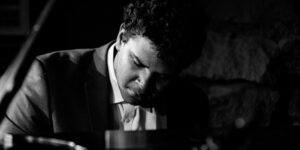 One of Nashville’s most talented up-and-coming pianists Marc Payne will lead his trio. Payne has been praised for his diversity and wide knowledge of many jazz styles. He has spent his life in Nashville soaking up many different sounds and styles, and this diversity comes through in his masterful playing.
One of Nashville’s most talented up-and-coming pianists Marc Payne will lead his trio. Payne has been praised for his diversity and wide knowledge of many jazz styles. He has spent his life in Nashville soaking up many different sounds and styles, and this diversity comes through in his masterful playing.
Music in the Vines
October 26, 2024 @ 3:00 pm to 7:00 pm at Arrington Vineyards
Arrington Vineyards features concerts of Jazz and Bluegrass every Saturday and Sunday. This performance features Andrew Carney and the Essentials.
Jody Nardone Trio
October 26, 2024 @ 5:30 pm to 7:30 pm at Rudy’s Jazz Room
Prominent Nashville pianist Jody Nardone brings his trio to Rudy’s for a classic jazz set. With a growing national reputation, Nardone seamlessly shifts from the “whispered beauty of Bill Evans to the percussive flights of McCoy Tyner.” (Michael McCall, Nashville Scene)
Maestro Lightford as Sir Wellington
October 26, 2024 @ 7:30 pm to 9:30 pm at Nashville Jazz Workshop’s Jazz Cave
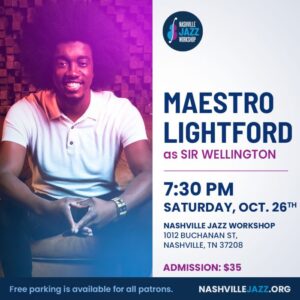 October Highlight! Nashville-native-turned-LA-success Melvin “Maestro” Lightford has worked with some of the biggest names in the industry today, including Mickey Guyton, Corbin Blue, Keb Mo, Michael McDonald, and more. He now celebrates the release of his sophomore album, Sir Wellington, a collection of big band music composed out of Lightford’s love for the classic big band composers of yesteryear, Duke Ellington, Count Basie, and Quincy Jones.
October Highlight! Nashville-native-turned-LA-success Melvin “Maestro” Lightford has worked with some of the biggest names in the industry today, including Mickey Guyton, Corbin Blue, Keb Mo, Michael McDonald, and more. He now celebrates the release of his sophomore album, Sir Wellington, a collection of big band music composed out of Lightford’s love for the classic big band composers of yesteryear, Duke Ellington, Count Basie, and Quincy Jones.
Geoff Pfeifer Quartet
October 26, 2024 @ 11:00 pm to 11:30 pm at Rudy’s Jazz Room
 Playing a mix of Wayne Shorter tunes and originals, Geoff Pfeifer brings gritty, edgy, genuine NYC-style jazz to Rudy’s stage with his Quartet.
Playing a mix of Wayne Shorter tunes and originals, Geoff Pfeifer brings gritty, edgy, genuine NYC-style jazz to Rudy’s stage with his Quartet.
Music in the Vines
October 27, 2024 @ 1:00 pm to 5:00 pm at Arrington Vineyards
Arrington Vineyards features concerts of Jazz and Bluegrass every Saturday and Sunday. This performance features the Reed Pittman Band.
Analog Soul
October 27, 2024 @ 6:00 pm to 8:00 pm at Analog at Hutton Hotel
The Analog continues its Analog Soul series, featuring some of the city’s most promising emerging talent who are redefining soul music. Artists for this performance are still TBA. General admission is free, while you can reserve seating for $20.
Stephanie Adlington
October 27, 2024 @ 6:00 pm to 10:00 pm at Sambuca
 A Nashville vocal go-to, award-winning vocalist, songwriter and vocal coach Stephanie Adlington is known as the “Siren of the South,” with an “unrivaled” take on the Great American Songbook.
A Nashville vocal go-to, award-winning vocalist, songwriter and vocal coach Stephanie Adlington is known as the “Siren of the South,” with an “unrivaled” take on the Great American Songbook.
Sully’s Swingin’ Sunday Supper
October 27, 2024 @ 6:00 pm to 8:00 pm at Rudy’s Jazz Room
 Every other Sunday, Rudy’s features a Sunday dinner, with one of Music City’s top bassists Jimmy Sullivan leading a swingin’ jazz band featuring rotating special guests, for which a unique dinner special is served just for the show.
Every other Sunday, Rudy’s features a Sunday dinner, with one of Music City’s top bassists Jimmy Sullivan leading a swingin’ jazz band featuring rotating special guests, for which a unique dinner special is served just for the show.
Michael Fair
October 27, 2024 @ 7:00 pm to 11:00 pm at Sambuca
Smooth jazz trumpeter and flugelhornist Michael Fair performs, offering a relaxing vibe for a night out in the Gulch.
Rahsaan Barber and Everyday Magic – “Six Words” Album Release Concert
October 27, 2024 @ 7:30 pm to 9:30 pm at Nashville Jazz Workshop’s Jazz Cave
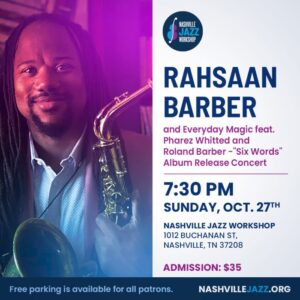 Having performed on some of the world’s most renowned stages, saxophonist Rahsaan Barber now celebrates the release of his new album, Six Words, featuring all original compositions. His band, Everyday Magic, features Pharez Whitted (trumpet), Roland Barber (trombone), Matt Endahl (piano), Kevin Beardsley (bass), and Joshua Hunt (drums).
Having performed on some of the world’s most renowned stages, saxophonist Rahsaan Barber now celebrates the release of his new album, Six Words, featuring all original compositions. His band, Everyday Magic, features Pharez Whitted (trumpet), Roland Barber (trombone), Matt Endahl (piano), Kevin Beardsley (bass), and Joshua Hunt (drums).
Parlor Greens
October 27, 2024 @ 8:00 pm to 10:00 pm at Brooklyn Bowl Nashville
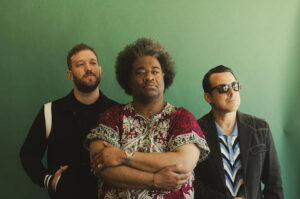 October Highlight! Parlor Greens is a fresh new organ trio who released their debut album earlier this year. Presenting a fresh interpretation of the organ trio lineup while still paying homage to the trios of yesteryear, this should be a can’t-miss show for any jazz fan. Please note that this is an opener set. Parlor Greens is opening for the band The Dip.
October Highlight! Parlor Greens is a fresh new organ trio who released their debut album earlier this year. Presenting a fresh interpretation of the organ trio lineup while still paying homage to the trios of yesteryear, this should be a can’t-miss show for any jazz fan. Please note that this is an opener set. Parlor Greens is opening for the band The Dip.
Erik Blue
October 28, 2024 @ 6:00 pm to 10:00 pm at Sambuca
 This band has been described as “the best live band in Nashville,” creating an upbeat atmosphere that keeps audiences on their feet.
This band has been described as “the best live band in Nashville,” creating an upbeat atmosphere that keeps audiences on their feet.
Christine Parri
October 28, 2024 @ 6:00 pm to 8:00 pm at Rudy’s Jazz Room
 Powerhouse Australian vocalist Christine Parri returns to the Rudy’s stage. Her voice has been praised as invoking Artha Franklin, Etta James, Amy Winehouse, and other iconic women vocalists. Her past Rudy’s appearances have brought in sold-out crowds, and she continues to grow her name and audience in Music City.
Powerhouse Australian vocalist Christine Parri returns to the Rudy’s stage. Her voice has been praised as invoking Artha Franklin, Etta James, Amy Winehouse, and other iconic women vocalists. Her past Rudy’s appearances have brought in sold-out crowds, and she continues to grow her name and audience in Music City.
Christine Parri
October 29, 2024 @ 6:00 pm to 10:00 pm
 Parri is an Australian jazz vocalist known for her powerful performances.
Parri is an Australian jazz vocalist known for her powerful performances.
Viktor Krauss
October 30, 2024 @ 6:00 pm to 8:00 pm at Rudy’s Jazz Room
 Viktor Krauss is a bassist that has called Nashville home since 1992, and has over 600 credits to his name as either bassist, composer, or producer.
Viktor Krauss is a bassist that has called Nashville home since 1992, and has over 600 credits to his name as either bassist, composer, or producer.
Cory Wong ft. Mark Lettieri w/ Special Guests Couch and Theo Katzman
October 30, 2024 @ 7:30 pm to 9:30 pm at The Ryman Auditorium
 October Highlight! A star-studded lineup of titan jazz and fusion musicians comes to the Ryman stage for back-to-back nights. The headline names here practically need no introduction as they represent the cream of the crop of modern jazz players. Wong and Lettieri are modern guitar heroes.
October Highlight! A star-studded lineup of titan jazz and fusion musicians comes to the Ryman stage for back-to-back nights. The headline names here practically need no introduction as they represent the cream of the crop of modern jazz players. Wong and Lettieri are modern guitar heroes.
Guest Artist Concert: Jon Hamar, Bass
October 30, 2024 @ 8:00 pm to 10:00 pm at Turner Recital Hall, Vanderbilt University
 Jon Hamar is a jazz bassist based in Knoxville, where he teaches at the University of Tennessee. Known for his versatility, Hamar boasts an extensive performance history, including performances with Ernestine Anderson, the Jeff Hamilton Trio, and the Clayton Hamilton Jazz Orchestra. Tickets are pay what you wish ($0-30)
Jon Hamar is a jazz bassist based in Knoxville, where he teaches at the University of Tennessee. Known for his versatility, Hamar boasts an extensive performance history, including performances with Ernestine Anderson, the Jeff Hamilton Trio, and the Clayton Hamilton Jazz Orchestra. Tickets are pay what you wish ($0-30)
From the Nashville Film Festival
The Ties that Bind Us: Graveyard Shorts
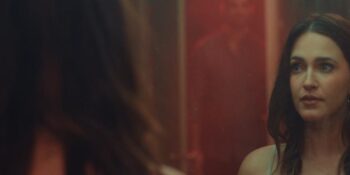
The Graveyard Shifts Shorts Program: The Ties that Bind Us is a block of seven films that engage with the horror genre at different levels. Much of it is derivative, as needs be in a genre, but the best moments create inspired takes on old tropes, improving and altering ideas or engaging with new aesthetic approaches under genre defining formulae. Unfortunately, due to technical difficulties, I was not able to view the first film in the block, Strange Creatures, although it’s preview made it look fabulous!

Second in the collection, Devon Kane’s Obsession, describes a woman’s encounter with a serial killer, the “Hitchfield Killer” but instead of seeking safety, she is attracted to his authenticity and seeks to share in his fame. Is the green door a reference? All of this is framed within the commodified industry of a culture of death. Rachel Deutsch is a wonderfully fetching and terribly confused victim whose presence strengthens the on screen presence Joe Chambrello’s killer. This short is silly and socially critical in important ways, and as such it is most socially active film on the block.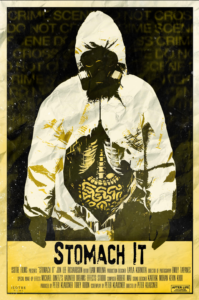
As a short, Be Specific is an autonomous scene that, starring Zach Tinker and Thomas Archer, seems to open as a pair of actors are rehearsing or writing a script. The slow transition of their mundane argument concerning word choice and inspiration, to the reveal, is boldly reminiscent of Vincent and Jules in Pulp Fiction—it is the everyday boredom of characters in non-ordinary situations. The set’s composition, the sunlight, the cats, the crocs, and the teddy bear are nearly as inspired as the reveal itself. Thomas Archer’s subtlety, the power of a single tear, is the polar opposite of Tarentino’s pulp, but just as compelling. This film has the most nuanced on the block.
Peter Klauner’s Stomach It also depends on props for an efficient exposition. Jon Lee Richardson puts in a wonderful performance seemingly inspired by Rick Moranis’ “Tully” from Ghostbusters. The narrative is very Poe, The Telltale Heart Stomach? but the headline is Karthik Mohan and Kevin Khor’s symphonic sound design. From the squelch of the oatmeal to the effervescence of the fizz, the aural sets the scene and Robert Mai’s score heightens the tension. This film has the best sound on the block.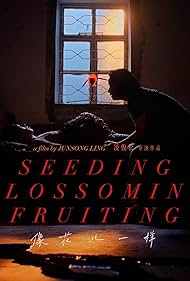
Junsong Ling’s Seeding, Blossoming, Fruiting, is a dark take on the circle of life, and the lengths to which a person will go for a loved one. It too depends on a rich sound design, but here Yinan Gan’s lighting and Meng Gao’s photography are just as beautiful, even if often marked by an obstructed or partial view (compositional choices which support the narrative wonderfully). This is the most beautiful short in the block.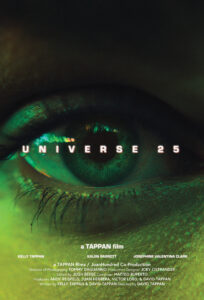
If Ling’s work is most beautiful, David Tappan’s Universe 25 is richest in “Easter Egg” references. The title itself is a reference to a series of rodent experiments designed to measure the amount of personal space needed to prevent social collapse. The idea of protagonist Mel (an intimate and relatable Kelly Tappan) being kept is corroborated by a print of Wyeth’s Christina’s World on the wall, and a speechless Hal 9000 faceplate in every room (both references to a Space Odyssey). When Mel’s narrative arch approaches its apex the soundtrack channels the micropolyphony of Ligeti and she begins to dance in a corporeal mime. It’s a fun watch and a whole lot shorter than Kubrick’s epic essay. This was the most existentially angsty film on the block.
Turner Barrowman and Jack Goldfisher’s Caller 102: A Ballad of Cyberspace is the most fun, if the most derivative, film on the block. Josh Brener’s character is a just-a-little-bit rougher Matthew Broderick from Wargames, with more engaging AI and wonderfully vintage tech. Similar to Universe 25 the narrative ends with a gesture that Agent Smith might understand.
In all the collection provides a wonderful glimpse into the future of horror films, and the future is dark…very dark, but in a fantastic way!
From the Nashville Film Festival
A Couple of Shorts, Part 2
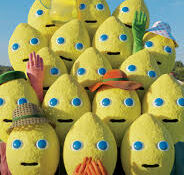
Lemon-Aid
This Tennessee horror short is strange and funny. It’s full of vibrant colors, almost no dialogue, weird movements and many sound effects. The story is simple, mysterious, and ridiculous. It begins in a colorful, idyllic suburban setting. A jogger cannot resist an empty lemonade stand with sparkling glasses and a full pitcher. He drains the entire pitcher of lemonade. Immediately his stomach begins to gurgle and he collapses. Suddenly a group of men and women appear: dressed in full suits or dresses with bright tights, all wearing gloves and with no visible skin, their most notable characteristic is that their heads are giant paper mache lemons. They kidnap the jogger and begin a journey that takes them through many different sections of town, moving rapidly to the mysterious climax.
The choreography for these strange lemon people is my favorite part of this short: they move in jerky, unnatural movements and almost always have their shoulders facing the camera, no matter what direction they’re moving in. I enjoy odd humor, and Director and Screenwriter Sumner McMurty provided it in this short.
Tskackaphis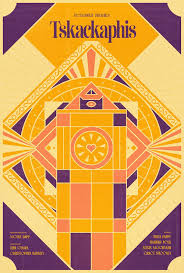
I have fond childhood memories of my father participating in the 48 Hour Film Project, a film festival with a delightful premise: each filmmaker is assigned a genre, character, prop, and line of dialogue, and has 48 hours to create a complete short. Tskackaphis was originally made for the 48 Hour Film Project in 2023. Brief, at around 7 minutes long, the short is (despite its categorization with the Nashville Film Festival as horror) pure comedy. Two women meet with their friend Phoebe, who tells them that it’s “Expose Yourself Day.” At first confused and worried that she expects them to provide some unexpected nudity, they realize that the exposure is of a more profound sort. The secrets they tell are far more shocking than you would imagine. The set is a house I’d like to live in, everyone is attractive and dressed stylishly, and there’s an unexpected use of the Nashville skyline. Fun to watch, this lighthearted sketch made me chuckle.
From the Nashville Film Festival
A Couple of Shorts, Part 1
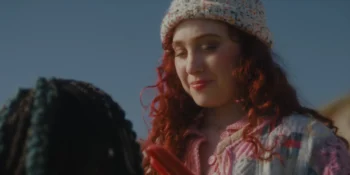
Casual (Music Video) by Chappell Roan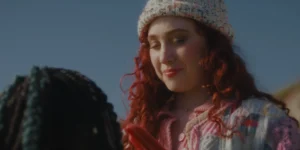
Chappell Roan (your favorite artist’s favorite artist) has shot to fame after her song “Good Luck, Babe!” broke into the Billboard Hot 100. With hits like this and “Casual,” it’s clear that it was only a matter of time before she became super popular. This music video has imagination, fantasy creatures, bloody deaths, and a love story. As Roan sings about how her partner wants to keep things casual despite their clearly conflicting actions, her character (she plays herself) falls in love with a sharp-toothed siren (Mika Lesha) who kills men. Roan is clearly head-over-heels for the siren, even changing the décor of her room to look like an underwater paradise. However, the siren does not have the same intensity of feelings. At the end, the siren goes off with another man, presumably to eat him, while Roan looks on, sadly. As she turns away, the water on the beach washes up red. The makeup by Chloe Gingold is wonderful, particularly on the siren who is both compelling and terrifying. Gingold also cleverly makes Roan into a glamorous version of Pierrot: a character of pantomime and commedia dell’arte, the sad clown. The direction by Hadley Hillel is wonderful as you can feel Chappell Roan’s love, heartbreak and anger (primarily with herself). The shots themselves are beautiful, particularly in the “happy” moments when everything is bright and soft. It elicits a wistful feeling, similar to the idea of looking back with rose-colored glasses. I really enjoyed this music video. As my step-daughter said, “It’s fire. I love it!”
ILY, BYE
Cringe comedy is all about finding humor in awkward moments (think The Office or Curb Your Enthusiasm) and, written and directed by Taylor James, has plenty of it! The video begins with the protagonist, Siobhan (Meg Stalter), getting a job opportunity from her roommate’s work place. After practicing what to say, she calls her potential new boss, prepared to speak with him, only to get his voicemail instead. As she leaves a long, rambling, socially awkward voice mail ending with “I love you, bye,” the audience can’t help but wince and cringe. She goes to her roommate’s place of work, intent on deleting the voicemail, revealing that she actually left multiple voicemails in an attempt to correct the first one, making everything worse. She breaks into the boss’s office and listens to his voicemails to delete her own, and discovers that although he is married to a woman, he is having an affair with a man that calls him, “Daddy.” You probably guessed, but this part is also unbelievably cringe. Cringe humor is difficult because you can quickly go overboard. Although I ultimately enjoyed this film, there were a few moments that were more uncomfortable than funny. My favorite part of this video was the set design and costume design. Siobhan’s wardrobe and room match her cheery and silly personality perfectly. The acting in this video is outstanding. The fact that Meg Stalter is able to make you like, and root for, this over-the-top character is down to her facial expressions and delivery. She’s sort of like the airhead cheerleader that you like despite yourself. Short and sweet, this film is only 13 minutes, so go check it out!
From the Nashville Film Festival
Nashville-related Music Films
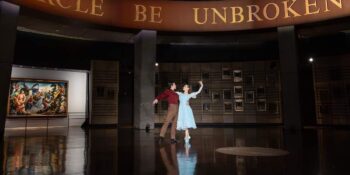
For this list I’ve curated films from the festival that are both short and feature length with Nashville-related subject matter. From denial to lament, nostalgia to excitement, as a collection they reflect some of the broader community’s perceptions of, and reactions to, the changing character of Music City and its almost unprecedented growth. In some ways, what you don’t see here remains part of the problem.
Chet Atkins’s “Jitterbug Waltz” Inspires a Nashville Ballet Performance in the Hall of Fame Rotunda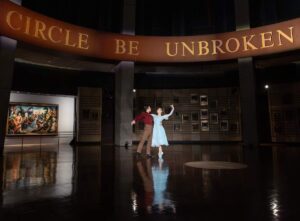
First up is Chet Atkins’s “Jitterbug Waltz” Inspires a Nashville Ballet Performance in the Hall of Fame Rotunda. Created in celebration of the centennial birthday of Nashville-based and Tennessee-born guitarist Chet “Mr. Guitar” Atkins, the Country Music Hall of Fame and the Nashville Ballet collaborated in a filmed ballet performance to his “Jitterbug Waltz” in the Hall of Fame’s Rotunda. The dance, envisioned by Museum trustee David Conrad and choreographed and co-directed by Nick Mullikin of the Nashville Ballet, brings to life the central pair of dancers in Thomas Benton’s famous painting “the Sources of Country Music.”
The film opens on the painting in its permanently home in the rotunda, and soon zooms out to see our dancers in stylized Western ware (costumes by Mycah Kennedy). Their dance seamlessly merges classic ballet technique with the subtle references to the innovations of Martha Graham’s Appalachia. Dancers Shaiya Donohue and Cassandra Thoms are simply fetching, providing the charming smiles and inestimable physical grace to accompany the cascading arpeggios of Atkin’s work. The cinemaphotography by Chad Driver takes advantage of the rotunda, producing whirling, dizzying shots as the camera, dancers, and background seem to twirl together, playing out a mesmerizing courtship.
The result is a little bit different from what we have come to expect from the Nashville ballet, an organization who, apart from the annual obligatory escapism of the Nutcracker, have been relentlessly political in choreography and expression. Here, however, the expression is much more escapist, in an enchanting, utopian, nostalgic and Romanticized view of America’s and Tennessee’s past, flush with white cisgender privilege and grace. It is a beautiful but reductionist image of our past that the museum itself has been trying to deconstruct recently with exhibits like the Night train to Nashville. Even so, I watched the video several times because it is simply beautiful.
Legacy in the Making: The Bluebird Café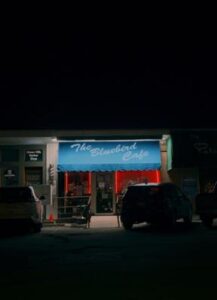
Director Dominic Gill’s Legacy in the Making creates a similar nostalgic view of Nashville in the documentary of the creation and history of The Bluebird Café. The narrative describes how the Bluebird process works, the auditions, the competition and how the in-the-round format was created to create an atmosphere that privileges songwriters. It is a story replete with heroes and little to no antagonism. Further, most of the discussion is focused on describing the Café as a small-town restaurant in the songwriting community instead of the role the Café has at the center of a music industry; a place where an artist will go to perform and land a contract. Like the Whisky a Go Go was for Hard Rock in California, Studio 54 was for Disco in New York or the American Bandstand was for Rock and Roll in West Philly, The Bluebird is ground zero for country songwriters in Nashville.
The only real recognition of its place in the industry is the use of chairbacks labeled with artist names coupled with chapter titles. We see Tom Waits paired with the chapter “Listen to Your Voice,” and Bonnie Raitt appears with “Amplify Your Voice.” There might be a little tension in the pairing of Taylor Swift with the “Preserve Your Voice” chapter, given that Swift was “discovered” at the Bluebird, but has since done anything but preserved a country, singer-songwriter voice. However, that tension is undeveloped. The video celebrates and romanticizes an industry that is still replete with issues of equality, diversity, and fair compensation practice—issues readily apparent throughout the video but left unaddressed. That said, for the Nashville tourist, the recently arrived artist with stars in their eyes, or perhaps a new employee orientation at the Bluebird, this film is perfect.
The Day the Music Stopped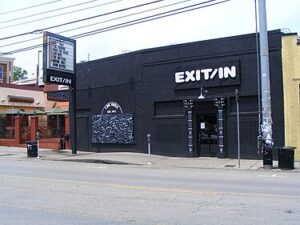
Unlike Legacy in the Making, and Chet Atkin’s Jitterbug Waltz, Patrick Sheehan and Demetria Kalodimos’ The Day the Music Stopped is a tragedy with a large collection of antagonists in its complicated depiction of city history. From floods, to bombings, tornados, to civil unrest, to global epidemics, to (a lack of) corporate competition, the story ascribes the closing of the iconic Nashville night club Exit/In to an incredible number of forces. This dive style punk club is the primary representative of the thriving alternative scene (alternative to country) in Nashville. Exit/In has, in the last fifty years, garnered a national reputation as the place to rock out on Saturday night in Music City. Since 1971 artists like Johnny Cash, Etta James, the Police, REM and many others have appeared there as well as professional wrestling and comedy (Steve Martin). Simply put, independent rock existed there and in Nashville long before Jack White ever left Detroit.
After a slow exposition that places the club in a historical context within the city, and a narrative describing many of the troubling societal events that have happened since 2010, without much explanation of each event’s relationship to the club’s dilemma, the film leads us to understand that the ultimate difficulty comes down to economics—the inability of the independent club to survive in the context of these issues and changes, more generally, in modern society and the music industry without (allow me to clutch my pearls) “selling out.” These are troubles that have and will continue to confront independent clubs across the country, whether it be 930 in D.C., Tower Theater in Philadelphia, the 40 Watt Club in Athens, or the Exit/In in Nashville.
From a broader perspective, there is a shelf life to any youth movement simply because folks grow older. It is worth noting that many of the characters you see in the film have reached or are already significantly north of the transitional and “untrustworthy” age of thirty. At one point in the film, a guitarist from Diarrhea Planet (a band featured widely in the film as the most prominent group on the scene) pleads with the crowd to be careful as what appears to be his teenage son surfs: “Do not fucking drop him!” This is parenting, the opposite of carefree youth. Indeed, the band was found 15 years ago in a dorm room at a local, private, and very expensive, Christian university. The idea of selling out has always been relative.
Also, a half century worth of longevity inevitably brings challenges. Granted that many of Nashville’s challenges result from exorbitant growth rather than decay, a place like the Exit/In and its community can only last so long before it either adapts to circumstance or succumbs to it. Operators (and heroes) Chris and Telisha Cobb may rue their decision to relinquish control of the venue, but this might be the only way that the institution could survive.
As a sell-out to the firm A J Capital Partners (a subsidiary of Live Nation—the Evil Empire), Exit/In may have lost some of its independence, but I see on the calendar that Amanda Shires will appear there in October, “Off the Record and Untamed” and in the face of her ex-husband and darling poet of mainstream country, Jason Isbell—what could be more Rock and Roll than that? Whatever happens with Live Nation and the Rock Music industry, whether or not their corporate, dominating trust will be allowed to continue to choke competition and rebelliousness to death, this is a beautiful film that will be sad, nostalgic and fun to watch for anyone interested in Rock, the history of Nashville in the early 21st Century, or simply feeling young and rebellious again.
Stud Country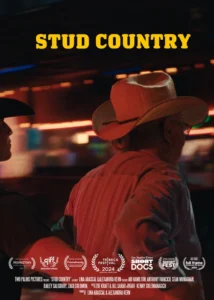
Finally, I chose the last film, Lina Abascal and Alexandra Kern’s Stud Country not because it takes place in Nashville, but because it presents a different way that a distinctly country and Nashville-based tradition may be employed to celebrate diversity. The film’s subject is an event, described as “…the largest queer country western line dancing event in America, which was created to preserve Los Angeles’ little known 50+ year queer line dancing tradition.” It provides an intimate take on the impact that safe spaces may have on a community and also the impact that occurs when those spaces are taken away, here through gentrification.
Perhaps the greatest aspect of the film is the intergenerational informants Sean Monaghan, a younger participant on the scene, and Anthony Ivancich, a dancer with a much longer history. In his introduction he describes his 50-years of experience as a queer dance teacher at Oil Can Harry’s in Los Angeles. Oil Can Harry’s one of the first publicly gay dance bars, opened in 1968 and closed its doors in 2021, this for many of the same reasons discussed above with the Exit/In. Ivancich’s story is important because he reflects on experience and the fact that people are resilient and will find a way: “I know the kids are frustrated the club is going to close soon, but having already been through this, I know it’s just probably another stage.” The symbolism in seeing these two men twostep is excellent cinema.
Given the political climate in the state of Tennessee, and the hyper masculinity that often accompanies the Country music traditions here, it is difficult to imagine queer line dancing would ever take hold in Music City, but a quick google search indicates that there is a weekly lesson, related to Stud Country, ongoing at Turn Their Heads! Now that the Wildhorse Saloon has shut down (or as Luke Combs’ would have it, “reimagined”) perhaps there is room for this more inclusive model in the Music City?
In all, this group of films at the Nashville film festival revealed the complexity of our Music City in its traditions, its growth, its difficulties and some of its diverse perceptions. Yet, there is still so much work to be done. This is obvious in the simple near absence of BIPOC (Black, Indigenous, People of Color) from all of these films set in Nashville—it is a lacunae that one might think will be addressed by the International Black Film Festival, also set in Nashville next month. One might note that we have a long history of separate but equal stuff in Nashville–it doesn’t work. In this new century, finding a way forward for everyone will be a challenge, but I think that the film makers are making an important contribution to the search.
From the Nashville Film Festival
We Can Be Heroes: Celebrating Difference
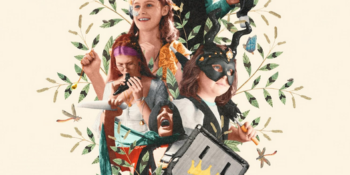
In the mid-60s, my brothers were diagnosed as autistic. It took awhile, because they were beautiful twin babies, perfectly healthy. Unlike Downs Syndrome, there are often no outer indications of autism. But after a year when they weren’t talking, the guessing began. Neurodivergence was not yet a common concept; in fact, the term wasn’t created until 1998. Doctors had no idea what to do. But Mom, a skilled elementary school teacher, was also a realist who could deal with any child, however or whoever they were. So our family had to find our own way, recognize their differences, and seek activities that would enrich their abilities. Our journey is what drew me to We Can Be Heroes.
Billed as a documentary on “neurodivergent, queer, and self-proclaimed ‘nerdy’ teenagers,” We Can Be Heroes traces the journey of the teens attending Camp Wayfinder, a live-action role playing (LARP) experience in upstate New York. Co-produced and co-directed by Carina Mia Wong and Alex Simmons, it premiered at the 2024 SXSW Film Festival. This 1 hr, 26 min film was released by Concordia Studios of Muck Media.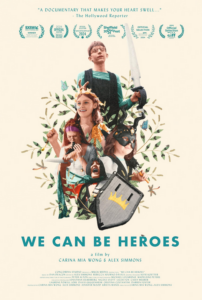
The one-week camp consists of a few days of introduction, two days of medieval/renaissance-style role-playing, and a final day of assessing the experience. Considered as a standard narrative, the three main characters are Cloud, age 11 (White Plains NY); Dexter, 15 (Manhattan); and Abby, 17 (Sacramento), while other campers and camp counselors are supporting cast.
During the intro days, campers get to know one another, choose the pronouns for their name-tags, and are reminded to respect personal boundaries. Some have already learned this lesson. Two bunkmates, for example, are grateful to find that each has been diagnosed with a variant of autism, grateful to spend time with someone who shares their experiences. A telling moment occurs when one says to the other, “Are you okay with hugs?” (Physical contact is often an overt issue with autistic people.) The other said it was okay—and they hugged. I remembered teaching my brothers to hug.
Campers are also kindly, but firmly, told that bullying will not be tolerated. Then they are introduced to “The Last Green,” a story outline created by counselors Clare and Claire. In the story, a verdant land of magical creatures has always been surrounded by a void. The void is simply a fact of life, not in any way feared until it begins to shrink inwards squeezing the green into a smaller and smaller space. The inhabitants must decide whether to try to flee, fight, or accept fate. Training for role-playing interactions to come, they learn: enjoyment is key, cooperation is vital, and accepting gains or losses with grace is desired. Most of the story will be improvised, so campers choose a character that represents who they are— or who they’d like to be.
During two pandemic years, prior to camp, Cloud had been to three different schools. Red Flag. With a college-level vocabulary and MIT-level arrogance Cloud might remind you of a proto-Sheldon Cooper. Obsessed with swordplay and identifying with Darth Vader, Cloud is clearly threatened by any scenario where the top position in the social hierarchy is held by anyone else. This cherubic-looking child envisions a character “too cool for their world [where] everyone is beneath them.”
Dexter, a lanky teen with an upper-class British accent, serves as narrator. Having been home-schooled his entire life, this is only the second time he’d sleep away from his parents. It’s not hard to imagine this aspiring writer turning into an awkwardly charming young man. During the camp, his anxieties about ticks and his crush on a girl he had met at camp last year dissipate. As his alter ego, he creates a good-hearted wizard whose spells never quite work out, what would be called a “squib” in Harry-Potter lore.
Abby is the most poignant character in the film. The victim of two potentially deadly gastric conditions, it isn’t clear, initially, that the camp will be able to accommodate her, so it was a joy to see her there. With humor, she explains her occasional need for a feeding tube and the machinery that runs it. She instructs fellow campers on how to approach her when she’s wearing it and how to avoid harming it when it’s charging. It was moving that the LARP character she chose would be a healer.
Throughout the film, the improv environment and costuming redolent of a medieval or renaissance fair is periodically accompanied by Marin Marais’ baroque masterpiece “Les Folies d’Espagne,” played on the historic relative of the cello, the viola da gamba. Although la folia is a Spanish dance, folies is also French for quirkiness or mania. Irony?
The cinematography sometimes effectively spotlights close-up shots like Dexter’ awkward foot movements as he discusses the girl he likes. But aerial shots of the camp’s Hudson Valley green spaces work metaphorically as a different, real, yet magical world where these special campers have a whole universe open to be themselves.
This is when another red flag concerning Cloud joins those posed by the three schools in two years. Counselors and campers are clearly troubled that this child, whose foam sword has had to be taken away after the first day of roleplay, wants to be either the leader of the clan, or to form a “death cult” where cult members could be convinced to commit suicide by walking into the void. Later, after an unnamed altercation, Cloud is removed from the camp and sent to a “therapeutic boarding school.”
Dexter, Abby, et al, however, grow in happy confidence. Abby finds the yelling and falling to the ground and healing the wounded in battle scenes “cathartic”; Miranda finds it “liberating.” Considering Abby’s health challenges and Miranda’s extreme shyness, this is heartening. Jud, head counselor, remembers how much the camp had done for him as a lonely gay teen. He is determined to carry on that legacy. Claire, remembers how costumes so seldom fit her, so she chooses a wide variety of sizes, determined that no camper should ever feel body-shamed. Lynsey, the only minority counselor, admires the campers’ courage in dealing with their differences, determined to deal with her own fear of insects in the wild.
After the two days of role play are over, the campers lie on the grass with their eyes closed as counselors move from camper to camper whispering, “Can I appreciate you?” Once the camper consents, a counselor kneels and gently praises specific areas of growth they’ve seen during the week. To see Dexter’s anxiety melt away as a gratified smile graces his young face is heart-rending. In the end credits, we find that he goes on to write the third volume of his stalled animé-style Atlantis trilogy. Abby goes on to college, majoring in graphic design. Clearly this camp recognizes and celebrates their differences, while enriching their lives. The filmmakers have told a story of accepting difference that we all need to hear. I wish it had been available decades ago.
From the Nashville Film Festival
A Man Called Hurt: The Life and Music of Mississippi John Hurt
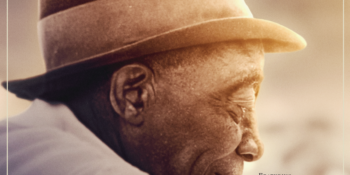
A Man Called Hurt: The Life and Music of Mississippi John Hurt begins as a comfortably muted scene in an old-time country home in Avalon, Mississippi. “Frankie” is playing on the crank-up Victrola. The film ends with “Since I Laid my Burden Down” playing in the background as the Victrola image fades.
In this 2024 release by Draft Films, a Tennessee film company, in conjunction with the Mississippi John Hurt Foundation, Jamison Stalsworth and Alex Oliver have created a lovingly rendered portrait of the life and career of Mississippi John Hurt, a soft-spoken bluesman from the Mississippi Delta. They are known for their short film Love, Trails, and Dinosaurs, a 2019 documentary of the 900-mile Smoky Mountain hiking adventure of a mother and her autistic son. In that film, Oliver served as director, while Stalsworth was one of the producers.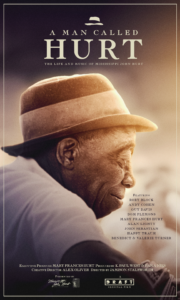
In “A Man Called Hurt,” both took on multiple roles as direct, editor, and cinematographer (Stalsworth), and creative director and cinematographer (Oliver). Additionally both were active camera operators alongside Ronald Levy. They achieved this moving tribute working with Hurt’s granddaughter Mary Frances Hurt, executive director of the Hurt Foundation
Like most country blues musicians, John Smith Hurt was self-taught. “I shall never forget,” he delicately reminisced about first picking up the guitar of a family friend at the age of eight. Four years earlier, Hurt, the grandson of enslaved people had lost his father to the Jim Crow-era scourge of lynching. He would later lose his only daughter to the gun of an abusive husband. His promising music career with Okeh Records was stopped in its tracks by the Great Depression. Despite all this tragedy and trauma, when Greenwich Village blues devotees sought him out in the folk-revival era of the 1960s, they found a warm, gentle man with a talent that had been preserved free of bitterness.
How was this possible? Benedict Turner, of the Piedmont Bluz Acoustic Duo, approaches the truth when he notes that Hurt’s “gentle approach to storytelling came across as if he was talking to his family sitting on the porch, just so lovingly.” Don Flemons, a folk musician self-billed as “The American Songster” further adds, “Even though he has sort of a sunny disposition in the way that he picks them, he’s still telling some hard truths…” This certainly applies at eyebrow-raising levels in “Ain’t No Tellin’” where he good-naturedly warns his friend that a good girl they know “might shoot you, might cut and starve you too, ain’t no tellin’ what she might do.”

Hurt’s granddaughter confirmed both points of view. As she grew up, she recalls “Daddy John” playing for his children and grandchildren under the mulberry tree on Sundays. Later, after this “PG” set, she learned that he’d play more “mature” music for the grownups. Raised by a hard-working mother, she also adds the intriguing point that Hurt often took a confident female perspective in songs like “I’m Satisfied.” The overall picture was one of personal dedication to family shown in and through his music.
The beauty of the music is reflected in the film’s cinematography, transitioning subtly from aerial shots of old-growth forests, cornfields, and swamplands of Mississippi, to intimate shots of family photos and personal objects in the small museum his granddaughter preserved for over two decades. Delicately interspersed among these images were two important features of the film, audio and video clips from Hurt’s performances, and personal vignettes from a varied roster of talented musicians, all devoted to Hurt and his music.
That roster includes Pete Seeger radio-interviewing Hurt, and John Sebastian, founder and lead singer for Sixties pop group, The Lovin’ Spoonful. He’d met Hurt as a teenager and performed harmonica with him at folk festivals, eventually taking his group’s name from one of Hurt’s songs. Unlike many film documentaries about music, the directors played what we in the South might call a “healthy portion” or a “gracious plenty” of each song.
The music and images complemented one another as the narration traced the influence of his unique finger-picking style. He used his thumb alternating strings for a bass line, while picking his melody with the index and middle fingers. This is in keeping with the Mississippi Delta blues style where the soft voice plays simultaneously with, or in alternation with, the guitar melody. But there is also a flavor of East Tennessee Piedmont blues with its hopping bass line and the syncopated melodies that were the grandchildren of ragtime.
Granddaughter Mary Frances’ tales of the difficulties in maintaining his museum are thankfully followed, post-credits, with Hurt’s cute alphabet song, “Chicken.” Then, with white font on a coal-black background, the filmmakers announce thrilling news. In early 2024, the museum was named a “historical landmark” by the National Register of Historic Places.
However, the tragedy that was an ongoing feature of Hurt’s life would not be denied. The day following this great honor, the museum burnt to the ground. Authorities have yet to determine a cause for why a museum that had stood undamaged for over twenty years, should suddenly catch fire. This gut-punch somehow seemed of a piece with Hurt’s life and this film—triumph, tragedy, love, loss. But his music survives.
Plans are in place to rebuild the museum. To help, contact: www.msjohnhurtfoundation.org
Clue
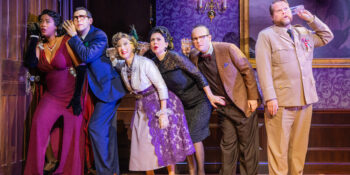
I have to admit from the start that I’m biased in favor of this play: it’s a faithful and spirited adaptation of the 1985 cult classic Clue. I grew up watching the black comedy on DVD and was excited when I saw the play was coming to TPAC. The film was made when producer Debra Hill wanted to make a comedy-mystery based off the board game Clue, and acquired the rights from the Parker Brothers. It took her several years to find a studio, director, and screenwriter. Jonathan Lynn (who directed My Cousin Vinny), a British playwright and director, ended up writing and directing the film. In 2017 he adapted the screenplay for the stage, and now it’s on a national tour.
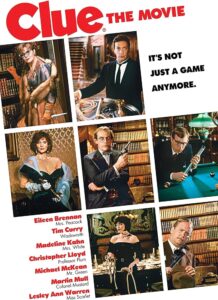
The plot of Clue is ridiculous and delightful. It’s the 1950’s, at the height of the McCarthy hearings. Six guests arrive at an old mansion and are greeted by Wadsworth, the butler. They go by pseudonyms (Colonel Mustard, Miss Scarlet, etc.) and as they speak with each other it is clear that they don’t know who their host Mr. Boddy is. As they wait for him to arrive, they all attempt to discover more about each other without giving away anything about themselves. Finally Wadsworth explains that they are all blackmail victims, and now is their chance to throw off Mr. Boddy’s oppression by refusing to pay him anymore and turning him in when the police arrive in an hour. But when Mr. Boddy arrives he gives each guest a gift: the classic weapons from the board game. He tells them that if they kill Wadsworth for him, then he’ll stop blackmailing them. Then he turns off the light. When the light is turned back on there is a dead body, but it isn’t Wadsworth’s. This proves to be only the first murder of the evening and the group scrambles to discover what’s going on while their time slowly runs out.
The entire play takes place at Boddy Manor. The set is excellent, an archetypical creepy mansion. The main stage is a large entry hall, with double front doors at the center. Along the sides of the hall are doors to adjoining rooms. These rooms can be simple doorways or they can pivot open to reveal a room: the library, kitchen, or lounge. Much of the film involves running around the mansion from murder to murder, and exploring the building in pairs. I was curious how they would make this work on stage. They do it cleverly: with dramatic hurried music they comically run in place as the set and lighting change. Farcical paired choreography establishes their search of the building.
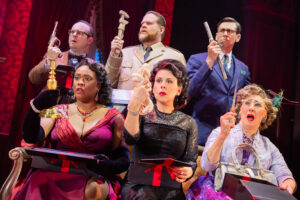
The original film was released in theaters with three separate endings, hypothetically meaning people would see the film three different times (this gimmick didn’t seem to succeed). When Clue was released on home video, the three endings were all included sequentially, with two being shown as possibilities but the third ending being the real one. The play includes multiple different endings and switches between them in a goofy, “rewound” manner, until the final ending. I won’t give any spoilers, but I will say that the final line of the play is identical to the final line of the film.
Clue is roughly 90 minutes with no intermission, almost the same length as the film, and the perfect length for a comedy. The humor and manic speed of witty dialogue are maintained in the play, made more impressive by each actor’s memory and comic timing. This play is an ensemble endeavor with jokes and plot points constantly bouncing from character to character.

Everyone is vibrant and ridiculous in their own way. One difficulty in an adaptation is to avoid doing an impression of the original actor without losing the beloved character’s identity. The cast does this well, maintaining the personalities while bringing something of their own. I attended the show Tuesday night, when understudy James Taylor Odom appeared as Wadsworth. He speaks with a similar accent and breathlessness as Tim Curry in the film, but I think breathlessness cannot be avoided in his role: Wadsworth has more lines than anyone else and each of his rapid lines matter, moving the plot and the dialogue of everyone else. Odom nails the role.
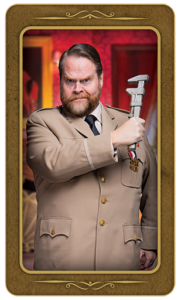
The character with the most new lines is Colonel Mustard. He’s a complete idiot and constantly misunderstands people, making delightful puns. If there’s something I love in a comedy, it’s puns and idiots, and John Treacy Egan plays him fantastically. An unexpected new facet is in Mr. Green, played by John Shartzer, who surprised us all with his hilarious and unexpected athleticism.
Jen Caprio’s costumes are great, fitting the stereotypes of the characters and helping accentuate their mannerisms. Each person looks so different that it helps the audience keep track of the characters. John Morris’s dramatic strings, harpsichord, and radio-drama organ music of the film is retained, altered slightly to become the play’s incidental music. The music is so good and ridiculous and threatening all at once, making it perfect for this farce.
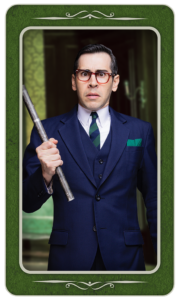
Clue has far fewer innuendos than the film, making it a good choice for parents with older kids who can enjoy witty dialogue and dark humor. It also was over by 9:00, making it convenient for anyone who has a drive ahead of them. While I’m far too familiar with the film to have been surprised more than a few times during the play, the audience roared with laughter at every joke. I don’t know if they had also seen the movie, but whether you have or haven’t, you’re guaranteed a good time.
Clue will be at TPAC’s Jackson Hall through September 15. For tickets and more information see Clue | TPAC®, and for more information about the tour see Clue – A New Comedy.


